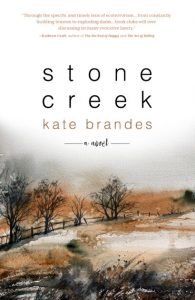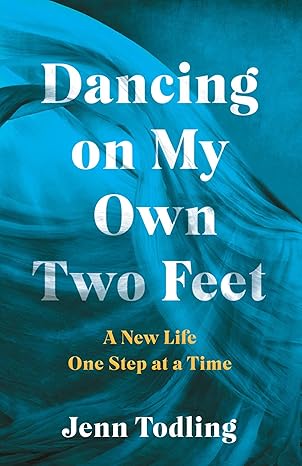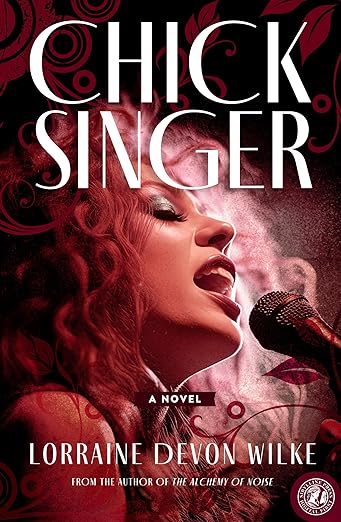Novels Featuring Nature from a Feminine Perspective Are Essential for Our Times
There’s a long literary tradition of writing about natural and rural places. Many of the most well-known nature writers (Henry David Thoreau, John Muir, Edward Abbey) wrote about nature and landscapes in ways that focused on a separation between pristine wilderness and human beings. Their writing conveys a feeling that the natural world is compromised by people. There’s little mention of family or friends. Instead, being alone in nature is glorified as a rugged, individualistic, stoic, and even masculine experience. These tropes have been echoed over and over in writing and media, which in turn has strongly shaped people’s idea of nature and who’s allowed to be part of it.
I would argue that stories featuring nature with a more feminine bent are essential, not only to unite people in these divided times, but also to foster people’s relationship with nature at this moment when the natural world we rely on is in peril.
Until I was a teenager, I lived in a series of urban areas where I sought out whatever form of nature I could find. I turned manmade drainage ways and storm pipes into creeks, imagined jungles from vines climbing up crumbling concrete walls, and saw unmown abandoned lots as bits of wilderness to explore. At thirteen I moved to a rural area surrounded by woods and finally felt at home. I was confident in the woods, in part because I was raised by a mother who grew up in them.
As an environmental scientist, I’ve worked my entire career on protection of nature in one way or another. And through that work I know that those efforts are best done when there’s a personal connection between people and place. People can’t care about things they’ve never experienced and particularly not something they fear. So, the idea of keeping humans and nature separate from each other only pushes people further from knowing it and caring about its wellbeing. In fact, after 25+ years of working as a scientist on natural resource protection, I believe that stories are one of the most powerful ways we have to solve environmental problems. Stories are often better than scientific facts in creating empathy between people and the natural world.
Girls and women, in particular, don’t have enough examples, in writing and other media, of seeing themselves as having agency in nature. Even when women or girls are featured in these kinds of stories (such as Wild by Cheryl Strayed and The Great Alone by Kristin Hannah), there’s still often a lot of aloneness and a human vs. wilderness dynamic that permeates the storyline. And while these are great stories, they aren’t the whole story.
Fiction featuring women and girls in rural places should represent their full, complicated lives including relationships, family, vulnerability, and community. In other words, writing with qualities that are generally thought of as more feminine. We need stories that embrace the messiness and uncertainty of a life lived in community with the landscape, because rural people live this way. There are as many women as men who live and work in rural places, plenty of women who hunt and fish and know their way through the woods with complete autonomy. But there are so few stories about them.
There’s a notion that rural American is something sad that should be left behind. But many people choose to live there. Maybe they’re born there and decide to stay or maybe they want to belong to a small community they can know well and work with. Often these people want to be close to nature, too. They’re generally positive about the future of their towns. These small towns and communities are also more diverse than commonly thought. Rural America is not a monoculture. Stories should better represent rural populations including the traditions of people and nature relying on each other.
In my new novel, Stone Creek, my protagonist, Tilly Stone, grows up in the woods. As a young person her father is the only other person she really knows. She’s comfortable in nature and knows how to handle herself. But she also longs to be a part of the community that’s just down the mountain from where she and her father live. The only problem is that she and her father are fugitives running from the FBI that’s pursuing them for acts of ecoterrorism they’ve committed.
To write the character of Tilly’s father, Frank, I was inspired by Edward Abbey’s novel, The Monkey Wrench Gang. The novel’s characters see nature and people similar to the canonical nature writers of the past. Frank’s a loner, who thinks he knows best for nature and for his daughter. He doesn’t see ways that humans and nature can co-exist. Tilly loves her father but has a vision for her life that he doesn’t share and can’t be part of.
Throughout the story Tilly must reconcile who she is and what she really wants: her father in her life or the community she’s always wanted to be a part of. Tilly thinks about nature and people as part of the same community. There’s a vulnerability to her throughout the story that Frank would never allow. And that vulnerability and desire to connect with others is Tilly’s saving grace.
I wrote Tilly’s character to push against the traditional nature writing tropes. She’s assured in the woods in ways that we see too little of across media. And she needs other people and the landscape around her to sort through the messiness and complexity of her life.
There are some writers who are writing nature in more feminine terms. Robin Wall Kimmerer, Camille Dungy, and Lauret Savoy have written and are writing some of the best nonfiction related to nature. And Julie Carrick Dalton, Kimi Cunningham Grant, Barbara Kingsolver, and Linda Hogan are authors of excellent stories with strong female protagonists in rural areas.
I hope my new novel will add to these voices, which are too few. Stone Creek is in some ways a love letter to my own small community, both human and natural, in which the only way forward is to lean on and support one another.
—
Kate Brandes lives in the small river town of Riegelsville, Pennsylvania, with her family. She writes about and paints rural places and small-town dynamics with underlying environmental themes. Kate has worked as a geologist and environmental scientist for more than twenty years. She currently teaches geology, creative writing and a course on Landscape, Culture and Story of Place at Moravian University, where she also co-directs the Moravian Writers’ Conference. Kate’s first novel, The Promise of Pierson Orchard, was published in 2017. Stone Creek, out in August 2024, is her second novel.
STONE CREEK
 Seventeen years ago, after living as a fugitive, Tilly Stone (then, age 13) is left to fend for herself in remote Pennsylvania when her infamous eco-terrorist father disappears under mysterious circumstances. She tries to forget the dams they blew up together and forge a new life until her father’s return threatens to upend her small-town world and her friendship with the dogged FBI agent still pursuing him. Ultimately, as the past and present detonate and blow up with more than one kind of casualty, Tilly must choose between the father she loves, the truth, and her home.
Seventeen years ago, after living as a fugitive, Tilly Stone (then, age 13) is left to fend for herself in remote Pennsylvania when her infamous eco-terrorist father disappears under mysterious circumstances. She tries to forget the dams they blew up together and forge a new life until her father’s return threatens to upend her small-town world and her friendship with the dogged FBI agent still pursuing him. Ultimately, as the past and present detonate and blow up with more than one kind of casualty, Tilly must choose between the father she loves, the truth, and her home.
ADVANCE PRAISE:
“…suggests shades of Delia Owens’ Where the Crawdads Sing and Harper Lee’s To Kill a Mockingbird.”
— Kirkus Reviews
“Kate Brandes is a remarkable author who has crafted a story that is a testament to the power of resilience and hope. In this inspiring journey, Brandes shares a story of courage and perseverance that fills us with optimism and determination for the future.”
—Midwest Book Review
“Simmering with suspense and brimming with heart, this beautiful story of heartache and resilience will linger long after its final pages.”
—Kimi Cunningham Grant, USA TODAY bestselling author of These Silent Woods
BUY HERE
Category: Contemporary Women Writers, On Writing





























Kate, I was about to mention “Where the Crawdads Sing” as an example, and now see that one review has also done so. I’m looking forward to reading your book! I wonder if you know “A Name of Her Own”, by Jane Kirkpatrick.
Thanks for your message, Jayna! I don’t know “A Name of Her Own,” but I just looked it up and it looks like a great read. Thanks so much for the suggestion! If you end up reading Stone Creek, I hope you’ll let me know what you think:)